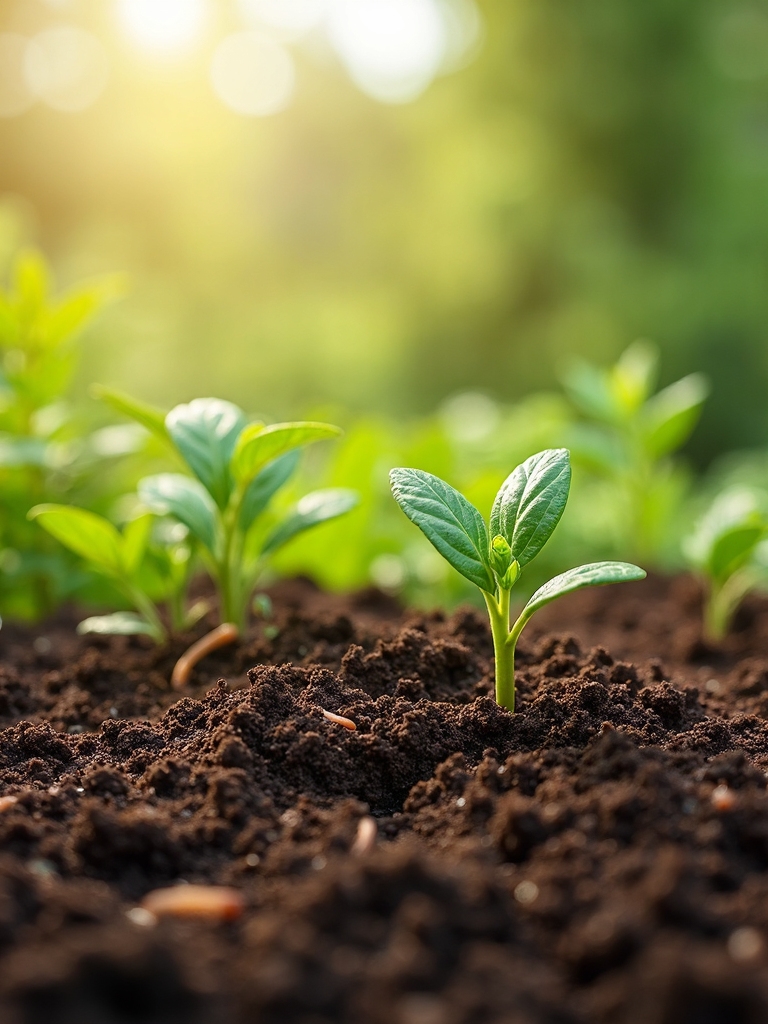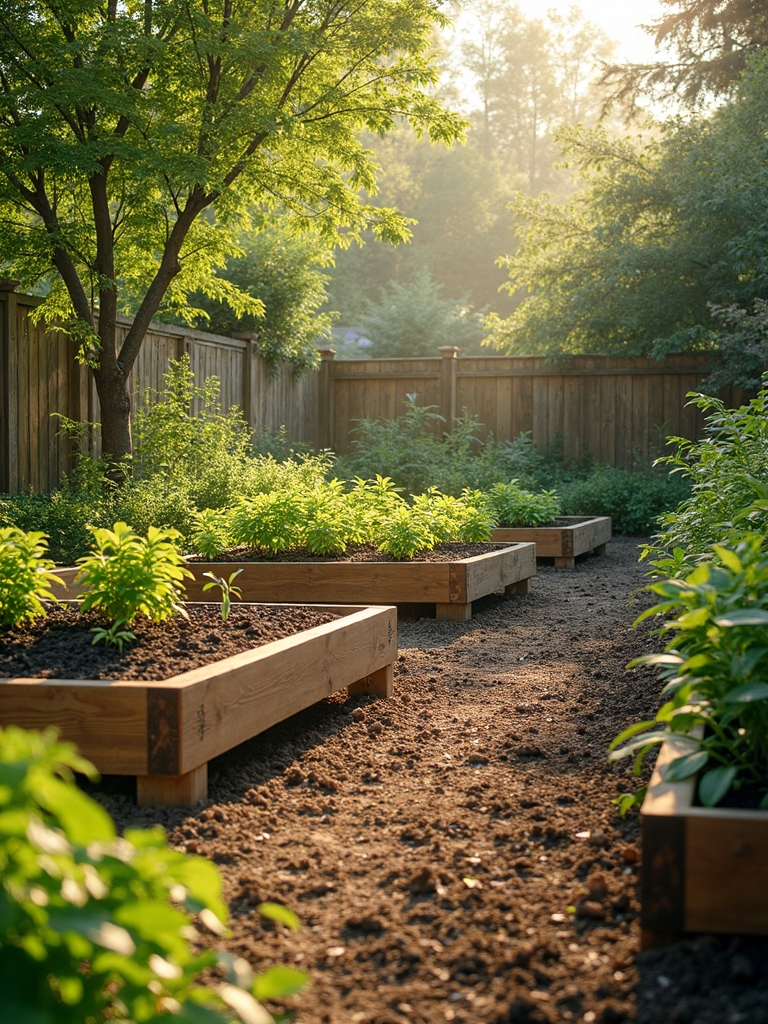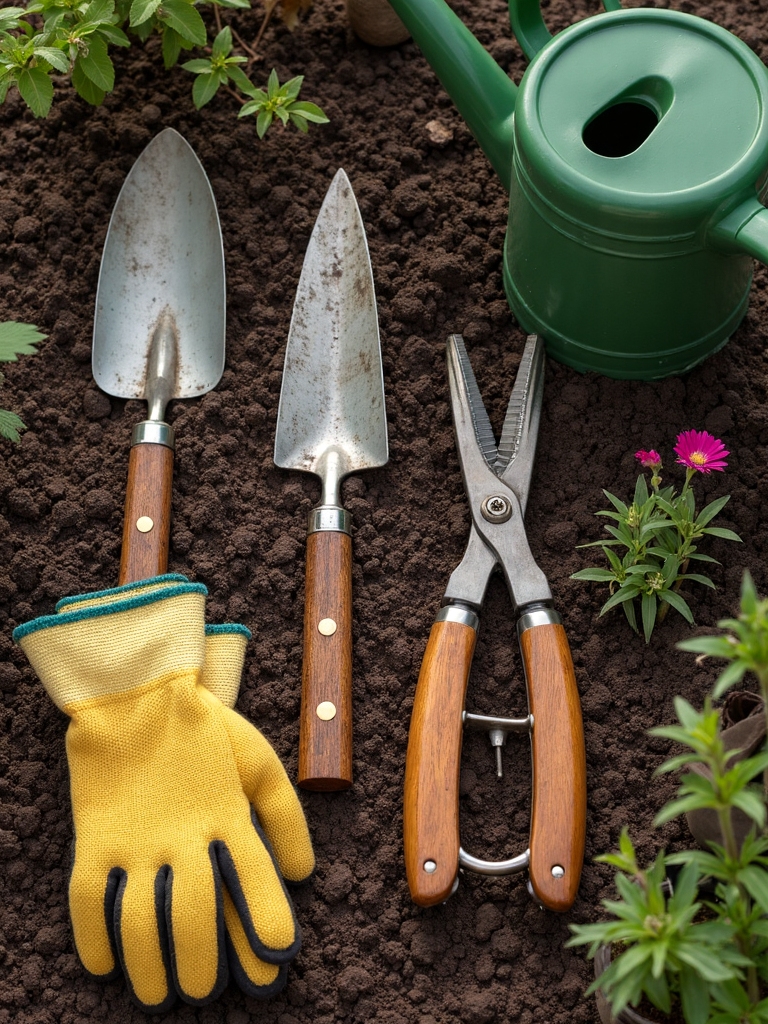You know, I still remember the day I ditched chemical fertilizers and welcomed organic gardening—it felt like breaking up with a toxic relationship! If you’re tired of wondering what’s really in your produce, you’re in the right place. Growing your own organic vegetables isn’t just rewarding; it’s surprisingly simple once you understand the basics. I’ve made plenty of soil-related mistakes so you don’t have to! Ready to convert that patch of yard into an eco-friendly oasis that’ll make your neighbors green with envy?
12 Second-Level Headings for “Beginner’s Guide to Organic Gardening”

When I first started my organic gardening trek, I was completely overwhelmed by all the information out there!
You’ll find these key areas essential: understanding soil health and adding organic matter, commanding compost creation, implementing crop rotation strategies, building raised beds, practicing organic pest control methods, and choosing companion plants. Breaking it down this way makes organic gardening so much more approachable—trust me, your garden will thank you!
Understanding Organic Gardening Principles

Although many people think organic gardening is just about avoiding chemicals, it’s actually a whole philosophy about working with nature rather than against it.
You’ll focus on creating healthy soil packed with beneficial soil organisms that support strong plant roots. I’ve found that adding compost to my garden beds creates a thriving ecosystem where plants naturally flourish without synthetic help.
Selecting the Perfect Garden Location

Finding the right spot for your organic garden is crucial to your success. I always tell my friends to choose a location with 6-8 hours of sunlight daily.
You’ll want to keep your plants away from large trees that compete for soil nutrients. Make sure you’re near a water source! If space is tight, container gardening works beautifully for organic plant growth.
Building Healthy Soil for Your Garden

The foundation of any successful organic garden lies in creating nutrient-rich, living soil. I can’t stress enough how important your soil’s health is!
Start with a soil test to check pH level and nutrient deficiencies. Then, add plenty of organic matter like homemade compost, which I lovingly call “garden gold.” You’ll be amazed how this black magic alters, changes, or modifies your growing success!
Creating Your Own Compost System

Now that you understand why soil health matters, let’s make your own “garden gold” right at home! Composting converts kitchen scraps and yard waste into nutrient-rich organic mulch that dramatically improves soil structure.
You’ll need a balanced mix of browns (carbon) and greens (nitrogen) – think leaves and vegetable peels. I’ve found adding a bit of aged manure compost accelerates things up beautifully!
Choosing Organic Seeds and Plants

Starting out with truly organic seeds and plants sets you up for gardening success! Look for “Certified Organic” labels to verify you’re getting products grown without synthetic chemicals. Yes, they’ll cost more, but they’re worth it!
I love using heirloom and open-pollinated varieties that I can save year after year. Avoid GMOs completely, and be careful with hybrid seeds – they’re productive but don’t reproduce reliably.
Essential Tools for Organic Gardeners

While you might be tempted to rush out and buy every fancy gardening gadget, successful organic gardening requires just a few quality tools to get started.
I’ve found that a sturdy trowel and pruners are essential for maintaining your raised bed. You’ll also need row covers to protect beneficial insects while deterring pests and diseases.
Water Management Techniques

Because water is the lifeblood of your organic garden, commanding proper techniques will save you time, money, and heartache!
Always check soil moisture before turning on your water source. Water plants at their base in the morning to reduce evaporation. I’ve learned that drip irrigation works wonders!
Trust me, mulch is your thirsty garden’s best friend—it retains moisture and prevents overwatering disasters.
Natural Fertilizing Methods

Since your plants need proper nutrition just as much as we do, natural fertilizers form the backbone of any thriving organic garden! I love how compost alters kitchen scraps into black gold, enhancing soil with organic matter.
You’ll find aged manures work marvels too! Try green manures like clover to augment nitrogen, or sprinkle rock powders for minerals. For rapid outcomes, I recommend liquid fertilizers from seaweed or fish.
Controlling Pests Without Chemicals

After nourishing your garden with natural fertilizers, you’ll need to protect those thriving plants from hungry invaders! I love using row covers over my garden bed to keep pests like cabbage worms at bay.
Diatomaceous earth works wonders too! Introduce ladybugs to help keep insect pests under control while they attract pollinators. For larger pests, I simply handpick them and drop them in soapy water.
Companion Planting Strategies

I’ve come to think of companion planting as nature’s own matchmaking service! When you pair certain plants together in your raised beds, they actually help each other thrive.
Try planting marigolds near tomatoes to repel pests, or add basil to improve flavor. Beans and peas make fantastic neighbors for hungry plants like corn. You’ll attract beneficial insects too, creating a healthy, balanced garden ecosystem.
Seasonal Planting and Maintenance

While companion planting creates harmonious plant relationships, timing your garden activities with nature’s calendar is just as imperative for success! I’ve found that the best soil in my raised garden comes from understanding seasons.
Start an organic garden by planning cool-season crops in spring, then summer’s warmth-loving veggies. Organic gardeners know to mulch with used coffee grounds and rotate crop families yearly. Don’t forget to succession plant every few weeks!
Frequently Asked Questions
How to Start an Organic Garden for Beginners?
Choose sunny locations with rich soil quality. You’ll need compost preparation methods, organic fertilizer application, natural pest control techniques, water conservation strategies, and careful seed selection considerations. Start small and expand gradually as you learn.
The Gardening 3 Year Rule
You’ll become an expert in organic gardening’s 3-year rule by implementing soil preparation methods, establishing compost application timing, planning crop rotation schedules, developing weed control strategies, learning pest management techniques, and following seed selection guidelines for sustainable success.
What Is the Rule of 3 in Gardening?
The gardening Rule of 3 guarantees you’ll succeed when you focus on proper sunlight, water, and soil. While planning, consider plant spacing, soil preparation with compost, crop rotation, seed selection, and companion planting for best results.
What Are the Rules for Organic Gardening?
You’ll need to improve soil with natural amendments, become proficient in composting methods, attract beneficial insects, implement organic pest control, practice companion planting, and choose untreated seeds. These form the foundation of organic gardening rules.
Conclusion
You’ve now got all the tools to start your organic gardening odyssey! Remember, it’s not about perfection—it’s about progress. Each season, you’ll learn something new as your soil gets richer and your garden thrives. Your efforts aren’t just growing delicious food; you’re nurturing the earth too. So dig in, get your hands dirty, and watch the magic unfold in your own little patch of paradise!
